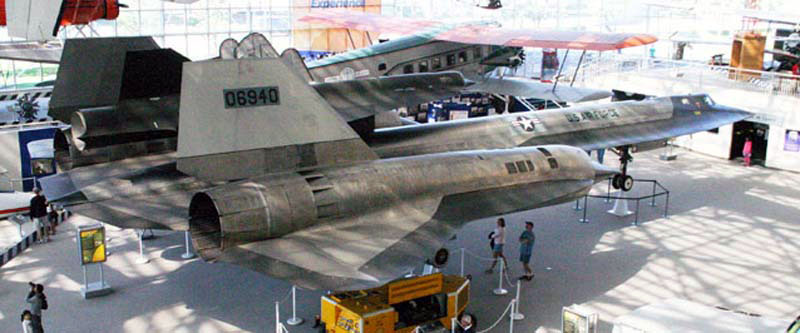| Lockheed | |||||||
|
A-12 / YF-12
/ M-21 Oxcart
|
|||||||
%20(8X4).JPG) |
|||||||
|
Photo: Robert Deering 6/13/2017 USS Intrepid Museum (CV-11) New York City, New York |
|||||||
|
The Lockheed
A-12 was
a reconnaissance
aircraft built
for the United States Central
Intelligence Agency (CIA)
by Lockheed's Skunk
Works, based on the designs of Clarence
"Kelly" Johnson. The aircraft was
designated A-12, the 12th in a series of
internal design efforts for "Archangel", the
aircraft's internal code name. It competed
in the CIA's "Oxcart" program against the Convair
Kingfish proposal
in 1959, and won for a variety of reasons. CIA's representatives initially favored Convair's design for its smaller radar cross-section, but the A-12's specifications were slightly better and its projected cost was much less. The companies' respective track records proved decisive. Convair's work on the B-58 had been plagued with delays and cost overruns, whereas Lockheed had produced the U-2 on time and under budget. In addition, it had experience running a “black” project. The A-12 was produced from 1962 to 1964, and operated from 1963 to 1968. It was the precursor to the twin-seat U.S. Air Force YF-12 prototype interceptor, M-21 drone launcher, and the SR-71 Blackbird, a slightly longer variation able to carry a heavier fuel and camera load. The A-12's final mission was flown in May 1968, and the program and aircraft retired in June. The program was officially revealed in the mid-1990s. A CIA officer later wrote, "OXCART was selected from a random list of codenames to designate this R&D and all later work on the A-12. The aircraft itself came to be called that as well." The crews named the A-12 the Cygnus, suggested by pilot Jack Weeks to follow the Lockheed practice of naming aircraft after celestial bodies. |
|||||||
|
|||||||
VARIANTS:
|
|||||||
|




%20(8X4).jpg)